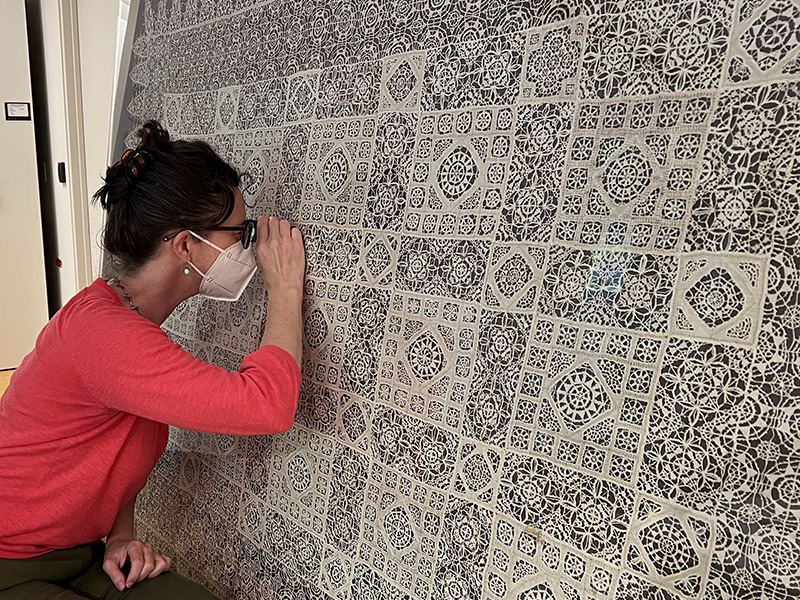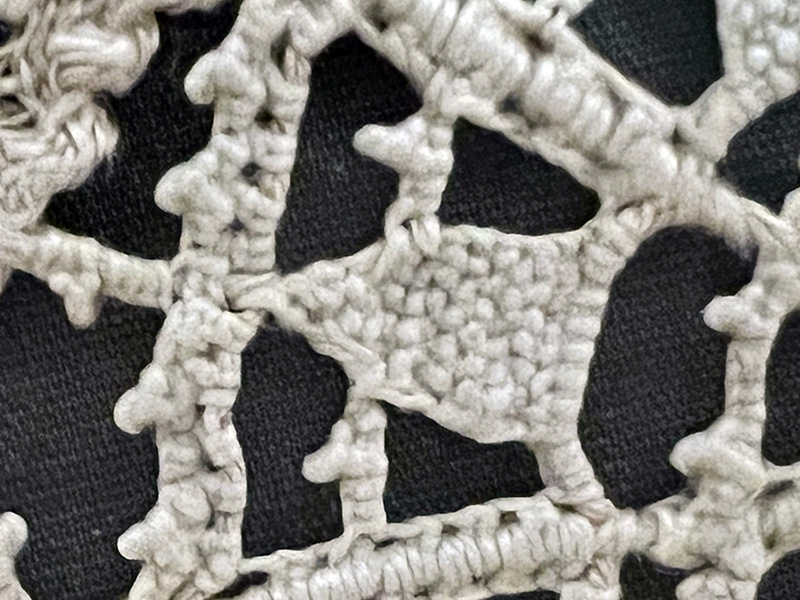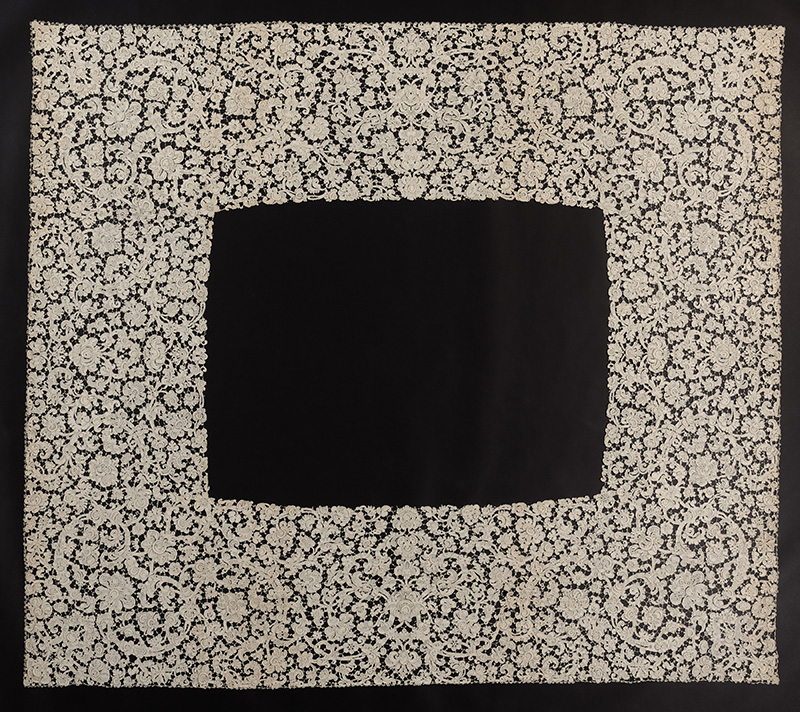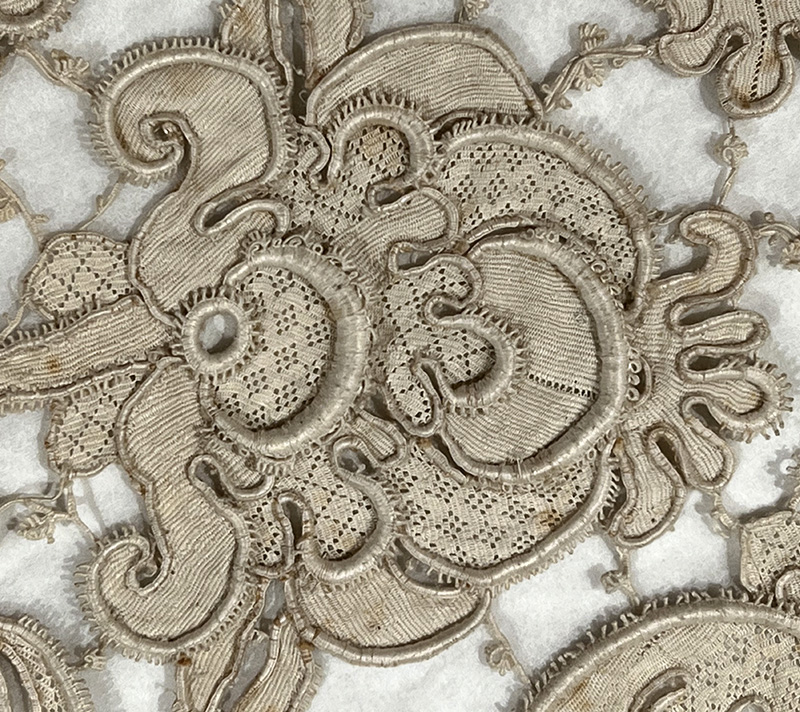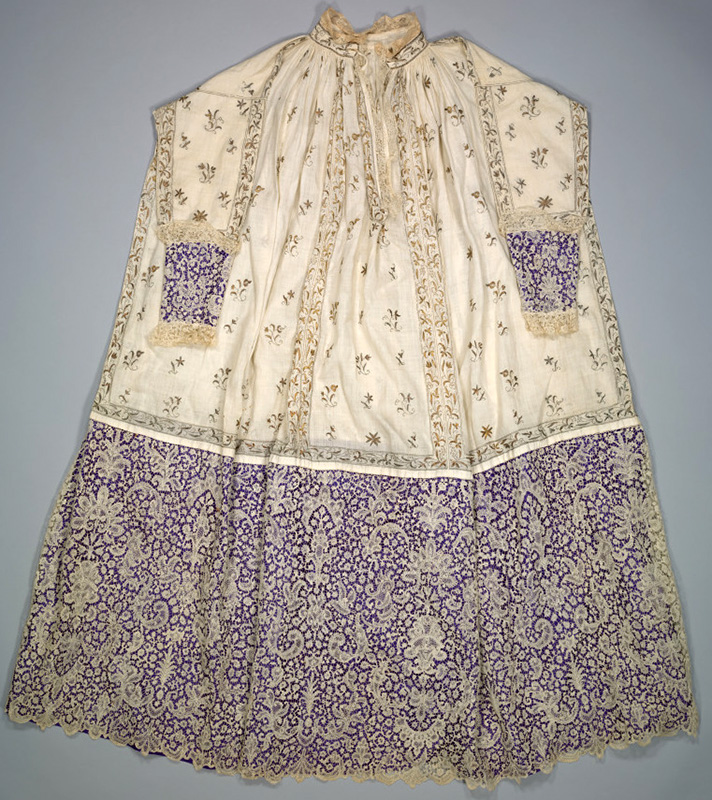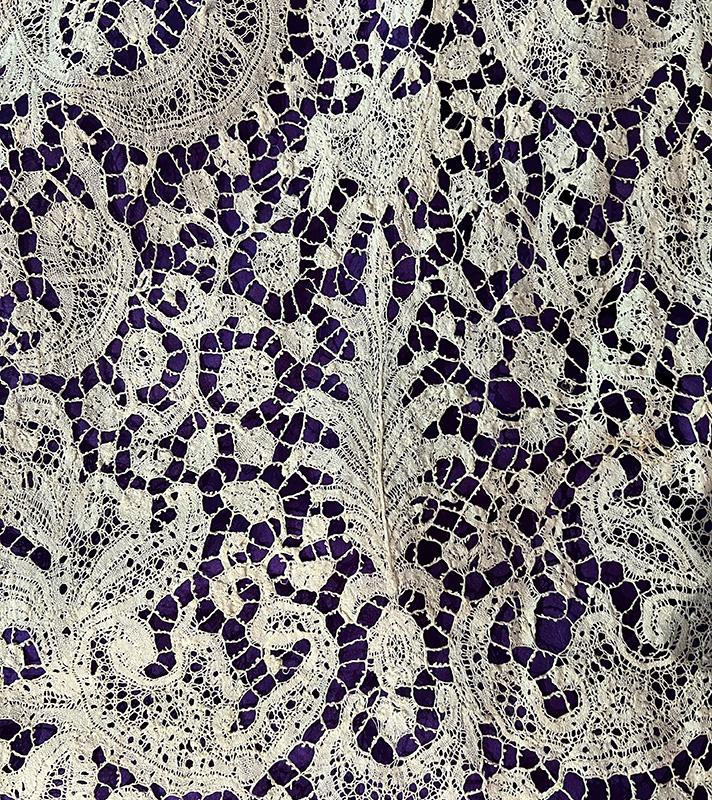Unraveling the Mysteries of Lace: Examining the Cleveland Museum of Art’s Important Collection
by Cecilia Gunzburger
With the support of a Decorative Arts Trust Research Grant, after two years of pandemic delays I was able at long last to further my dissertation project on early modern European lace at the Cleveland Museum of Art (CMA). I conducted technical analysis of 25 examples of 16th- and 17th-century Italian, French, and Flemish lace. I was especially glad to examine four large furnishing covers that are the focus of my research, as well as a bedcover border with matching valance and multiple table covers. I also studied garments, including a complete stomacher and two infant swaddling bands, and religious accessories, such as an archbishop’s alb with intact flounces and lining.
All of these lace textiles were made of linen fiber, which was the material agent of hygiene and civility in early modern Europe. Linen lace signified not only wealth and status due to its extreme expense, but also cleanliness and associated concepts of virtue for the men and women, both secular and religious, who wore and displayed it. The spectacular lace covers I am studying were used by elite women in their bedchambers as dressing table covers, wrapping cloths for nightclothes and undergarments, and bedcovers during the intimate female-centered rituals of dressing, grooming, and lying-in after childbirth through which the users rendered themselves virtuous and civilized members of European society.
One of the large checkerboard-style needle lace covers (figures 1 and 2) is a star of CMA’s collection and was published in Victoria and Albert Museum curator Santina Levey’s foundational 1983 book Lace: A History. The cover turned out to have an earlier form of needle lace filling technique than any of the 30 related examples I have seen thus far. This discovery confirms a late-16th-century date for the advent of this type of luxurious women’s cloth and suggests the form did originate in Italy rather than northern Europe, where many of the surviving covers and depictions of them were made.
Another of the CMA’s lace covers had remnants of hanging loops along one side, indicating that it was hung in a woman’s bedchamber as mentioned in a period document, or was perhaps repurposed as a Lenten to hang in a church.
Figure 1. Cecilia Gunzburger examining a late 16th-century Italian lace cover (1930.656) at the Cleveland Museum of Art, June 24, 2022. Photo by Amanda Mikolic.
A very rare and complete late-17th-century Venetian needle lace bedcover border was made to shape and features an exceptionally well-planned symmetrical design of Baroque floral scrolls (figures 3 and 4). This border and its matching valence relate directly to 17th-century depictions of lace coverlets on women’s lying-in beds for receiving well-wishers after the birth of a child.
Figure 3. Unknown makers, bedcover border, 1660-1700, Venice, Italy. Linen, raised point needle lace. Cleveland Museum of Art, Gift of Mrs. Edward S Harkness in memory of Mrs. Stephen V. Harkness, 1930.657.
Direct analysis of lace and all textiles is essential to establishing the materials, structures, techniques, and designs that form the basis for interpretation of their uses and social significance. Examining complete objects such as those in CMA’s collection allows me to determine which shapes, sizes, and design formats of lace panels and fragments were intended for use on which types of objects. This is essential to the study of lace, because the vast majority of extant lace textiles are anonymously produced, unprovenanced, and decontextualized from their initial garments or furnishings.
For example, the Flemish bobbin lace hem flounce and sleeve cuffs of the alb (a type of vestment) were made to shape in a continuous circle of the correct size for this garment with no seams. This structure suggests that the circular flounces of similar dimensions in other collections were likely to have been removed from albs and not other types of garments or furnishing textiles.
Figure 5: Unknown makers, archbishop’s alb, 1680-1720, Spain and Flanders. Linen, silk, gilt-silver thread; plain weave, embroidery, Brussels-type bobbin lace. Cleveland Museum of Art, Gift of J. H. Wade, 1920.1260.
CMA’s collection is especially strong in 16th-century Italian lace, and much was collected in Italy in the late 19th century by one of the museum’s founders. I was able to examine several objects with early cut and pulled work embroidery and needlework fillings that were precursors to true freestanding needle lace. The variety of techniques and quality of execution was wider than I have seen before in other collections, indicating both domestic and commercial production of openwork embroidery for such intimate objects as bathing towels and babies’ swaddling bands.
This research visit to one of the most important lace collections in North America made a significant addition to the base of objects and knowledge for my dissertation and will directly inform my interpretation of early modern lace. I am sincerely grateful to the Decorative Arts Trust for making this object-based material culture research possible.
Cecilia Gunzburger is faculty in the Smithsonian-George Washington University MA program in Decorative Art and Design History and a doctoral candidate in Art and Architectural History at the University of Virginia.
About The Decorative Arts Trust Bulletin
Formerly known as the "blog,” the Bulletin features new research and scholarship, travelogues, book reviews, and museum and gallery exhibitions. The Bulletin complements The Magazine of the Decorative Arts Trust, our biannual members publication.








